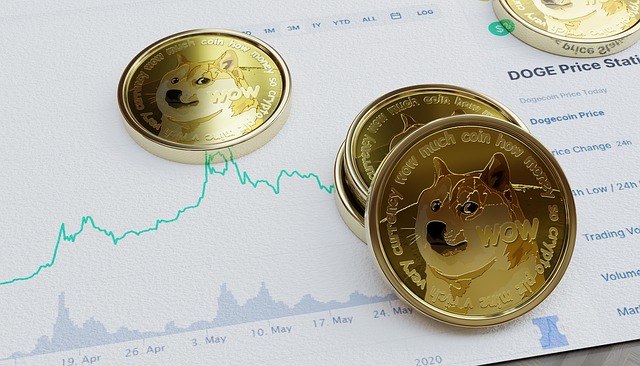Pricing misalignments in B2B transactions stem from differing value perceptions. To resolve these, businesses should adopt open negotiation, efficient discount management, demand curve analysis, and data-driven approaches. Transparent communication, pricing segmentation, and understanding price theory facilitate fair pricing, fostering trust and stronger client partnerships. Startups can leverage agility and legal aspects for tailored strategies while established firms enhance market navigation and maintain profitability through competitive pricing.
In the dynamic realm of Business-to-Business (B2B) transactions, pricing misalignment can hinder growth and trust. This article explores strategies to harmonize pricing structures in B2B deals, addressing critical issues like understanding pricing misalignment, adopting data-driven approaches, and building transparent relationships. By leveraging best practices, companies can ensure fair pricing, fostering long-term partnerships and market competitiveness. Discover effective solutions to optimize your B2B pricing strategies today.
- Understanding Pricing Misalignment in B2B
- Strategies to Harmonize Pricing Structures
- Data-Driven Approaches for Fair Pricing
- Building Transparent B2B Relationships
Understanding Pricing Misalignment in B2B

In Business-to-Business (B2B) deals, pricing misalignment occurs when the perceived value of a product or service diverges significantly from its actual cost. This gap can be attributed to various factors, including differing interpretations of market value, fluctuating input costs, and inadequate transparency in the supply chain. For instance, a vendor might offer high-quality products at a price that doesn’t reflect their true worth, while buyers may demand steep discounts based on perceived competition or past negotiations. Understanding these misalignments is crucial for both parties to forge mutually beneficial agreements.
Effective negotiation skills for better prices, coupled with efficient discounts and promotions management, can help bridge this gap. Vendors should be open to discussing pricing strategies, providing transparent cost breakdowns, and offering tailored solutions that meet buyer needs. On the other hand, buyers should develop robust profit maximization techniques while ensuring they’re not overly aggressive in their discount requests. Visiting us at determining fair price anytime can offer insights into striking a balance between these interests, fostering healthier B2B relationships built on trust and mutual understanding.
Strategies to Harmonize Pricing Structures

To address pricing misalignment in B2B deals, businesses must employ strategies that harmonize pricing structures. One effective approach involves understanding and leveraging the elasticity of different goods, ensuring prices reflect their true value in the market. By analyzing demand curves and elasticities, companies can adjust pricing dynamically, catering to changes in consumer behavior and market conditions. This not only helps in achieving optimal price points but also aligns with the principles of profit maximization techniques.
Additionally, establishing clear communication channels is vital. Regularly reviewing and discussing pricing strategies with stakeholders, including sales teams and customers, can help bridge any gaps in understanding. This collaborative approach fosters a shared vision for pricing, ensuring that decisions are made with both profitability and customer satisfaction in mind. Moreover, evaluating the premium pricing justifications for specialized or high-value products can further strengthen pricing alignments within B2B relationships, ultimately stabilizing wholesale pricing dynamics. Visit us at [brand/NAP] anytime to explore these concepts in more depth.
Data-Driven Approaches for Fair Pricing

In today’s dynamic business landscape, ensuring fair pricing in B2B deals is paramount for both established companies and startups. Data-driven approaches offer a robust solution to this challenge. By leveraging sophisticated analytics and variable costing methods, businesses can accurately assess their costs and market demand, leading to more competitive and transparent pricing strategies. This shift from traditional pricing models to data-centric ones enables companies to navigate complex markets effectively and foster stronger partnerships with clients.
Moreover, startups, known for their agility and innovative pricing strategies, can leverage negotiating skills to secure better deals. Understanding the nuances of price discrimination legal aspects allows them to implement tailored pricing strategies that cater to different customer segments while maintaining profitability. This strategic approach not only helps in securing revenue but also strengthens the startup’s position in a competitive market, ultimately contributing to their long-term success.
Building Transparent B2B Relationships

Building Transparent B2B Relationships is a cornerstone in addressing pricing misalignment. When businesses foster open communication and trust, they can negotiate prices with greater fairness and accuracy. This involves clear disclosures about cost structures, allowing both parties to understand the factors influencing the final price. By doing so, companies can avoid misunderstandings and ensure that the deal reflects the true value of the goods or services exchanged.
Price segmentation techniques play a vital role in this process. Segmenting customers based on their purchasing power, loyalty, or industry allows businesses to set retail prices more effectively. Understanding the price theory fundamentals enables B2B entities to make informed decisions about pricing strategies, aligning them with market dynamics and competitive landscapes. Moreover, giving us a call at product positioning through pricing ensures that offers are tailored to meet specific client needs, promoting mutually beneficial agreements.
In addressing pricing misalignment in B2B deals, a multifaceted approach is key. By understanding the root causes through data analysis and transparent communication, businesses can harmonize pricing structures effectively. Implementing strategic adjustments and embracing data-driven decisions foster fair pricing while strengthening B2B relationships, ultimately ensuring mutually beneficial agreements.
